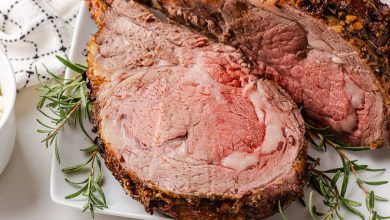Vanilla Ice Cream: Nutritional Overview
Vanilla ice cream is a beloved classic dessert that brings both comfort and indulgence to any occasion. With its creamy texture and rich, sweet flavor, this dessert is not only satisfying but also provides a variety of essential nutrients. Below is a comprehensive nutritional breakdown to help you understand the energy and key ingredients in every scoop.
Nutritional Information per Serving (Based on a standard 100g serving)
| Nutrient | Amount |
|---|---|
| Energy | 207 kcal |
| Protein | 3.5 g |
| Fat | 11.0 g |
| Saturated Fats | 6.79 g |
| Carbohydrates | 23.6 g |
| Fiber | 0.7 g |
| Sugar | 21.22 g |
| Calcium | 128 mg |
| Iron | 0.09 mg |
| Magnesium | 14 mg |
| Phosphorus | 105 mg |
| Potassium | 199 mg |
| Sodium | 80 mg |
| Zinc | 0.69 mg |
| Copper | 0.023 mcg |
| Manganese | 0.008 mg |
| Selenium | 1.8 mcg |
| Vitamin C | 0.6 mg |
| Thiamin (B1) | 0.041 mg |
| Riboflavin (B2) | 0.24 mg |
| Niacin (B3) | 0.116 mg |
| Vitamin B6 | 0.048 mg |
| Folate | 5 mcg |
| Vitamin B12 | 0.39 mcg |
| Vitamin A | 118 mcg |
| Vitamin E | 0.3 mg |
| Vitamin D2 | 0.2 mcg |
Allergen Information
Vanilla ice cream typically contains the following allergens:
- Milk (as a dairy-based product)
- Eggs (used in the custard base of many recipes)
- Sugar (a common sweetener)
If you have specific allergies or sensitivities, it’s important to check the ingredients list or choose non-dairy alternatives that cater to your needs.
Dietary Preferences
While vanilla ice cream is a delightful treat for many, it may not align with everyone’s dietary preferences. Here’s a quick guide:
- Vegetarian: Most vanilla ice creams are suitable for vegetarians as they are made from milk and eggs.
- Gluten-Free: Traditional vanilla ice cream is typically gluten-free, but always verify packaging for any potential cross-contamination.
- Low-Carb or Keto: Vanilla ice cream is not ideal for low-carb or keto diets due to its sugar content.
- Dairy-Free & Vegan: For those who avoid dairy or follow a vegan lifestyle, dairy-free alternatives such as coconut or almond milk-based ice cream can be enjoyed instead.
Advice for Enjoying Vanilla Ice Cream
When indulging in a scoop of vanilla ice cream, it’s helpful to balance it with other nutrient-dense foods, especially if you’re concerned about sugar intake. Enjoying it as part of a well-rounded meal or paired with fresh fruit can enhance its sweetness while offering added vitamins, fiber, and antioxidants.
For those with lactose intolerance, lactose-free versions of vanilla ice cream are available, offering a similar creamy texture without the digestive discomfort. If you’re craving a lower-fat option, consider trying reduced-fat or light vanilla ice creams that can still satisfy your sweet tooth while cutting back on fat and calories.
Conclusion
Vanilla ice cream, with its rich flavor and smooth texture, is a delightful indulgence that brings both joy and a variety of nutrients to the table. Whether you’re treating yourself or serving it up at a gathering, understanding its nutritional value allows you to enjoy it in moderation while benefiting from its calcium, phosphorus, and vitamins. Be sure to explore dairy-free or low-sugar alternatives if you have dietary preferences or restrictions.










